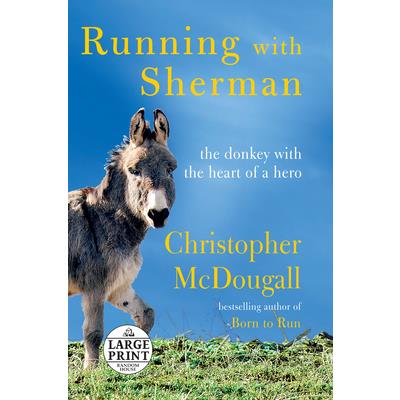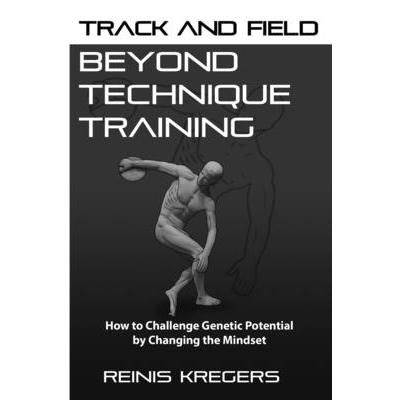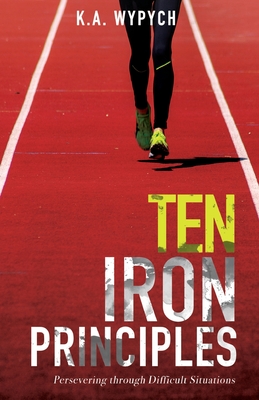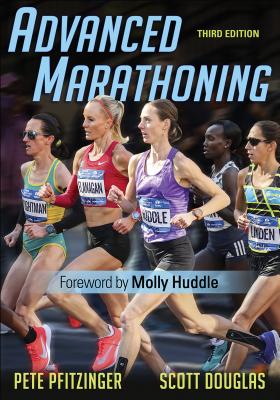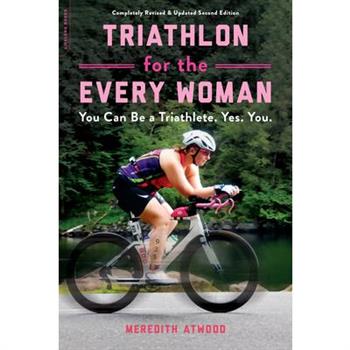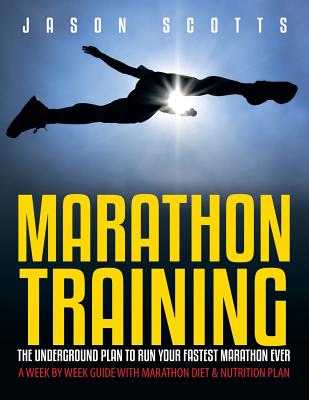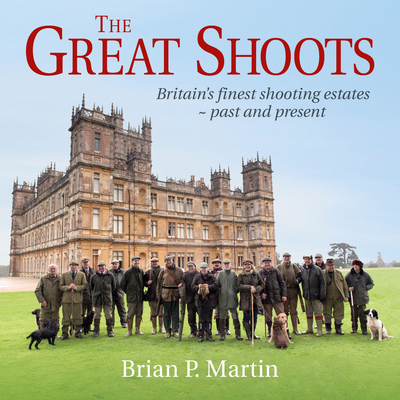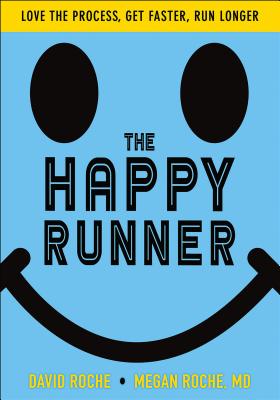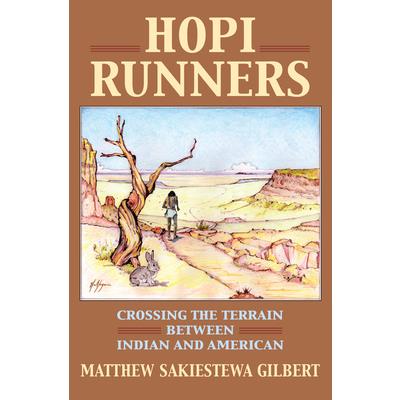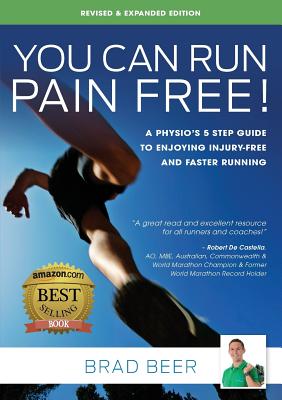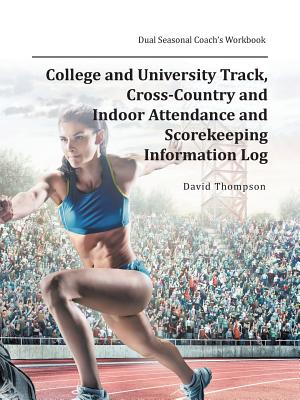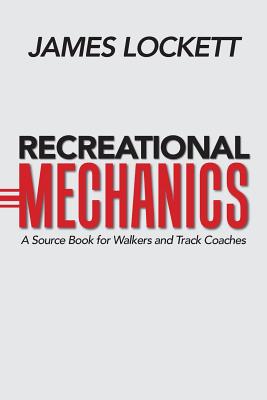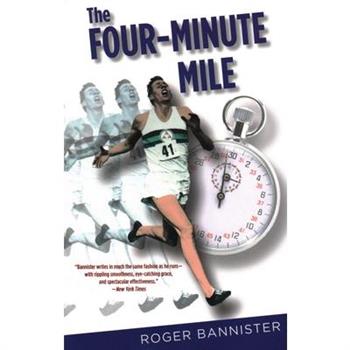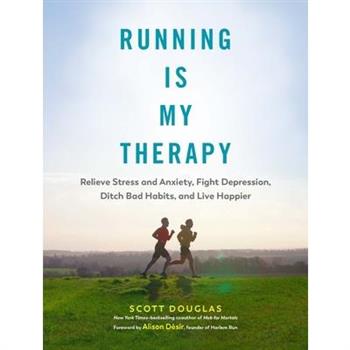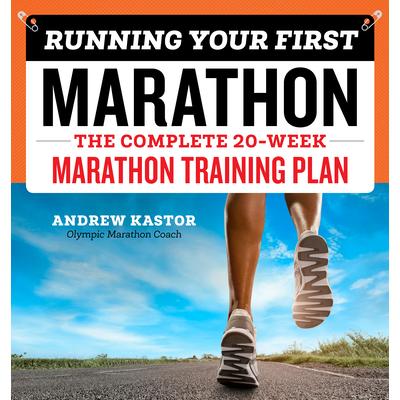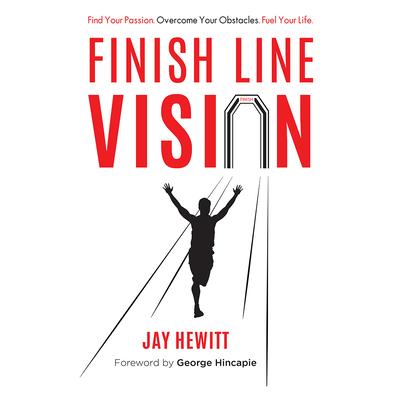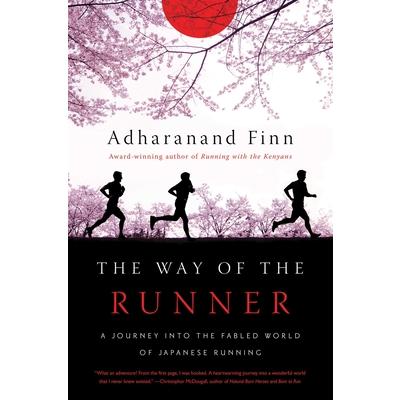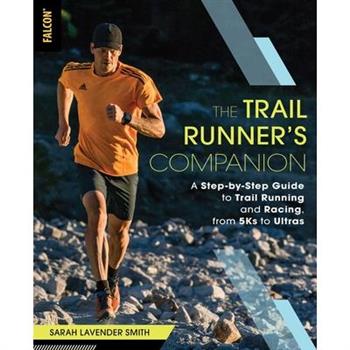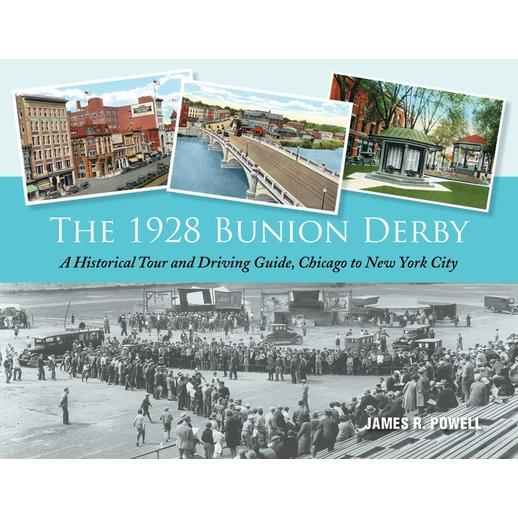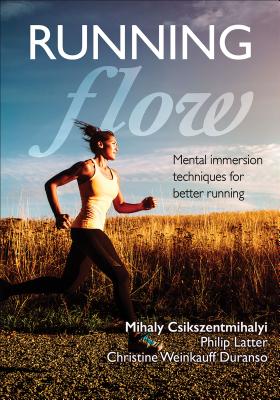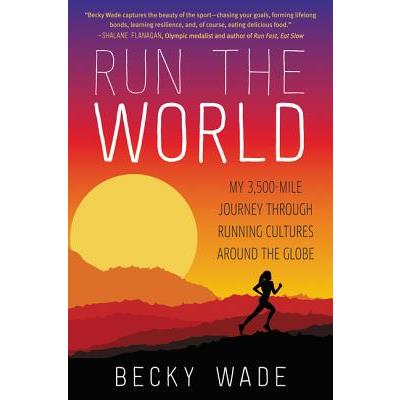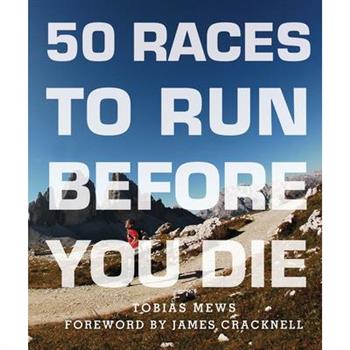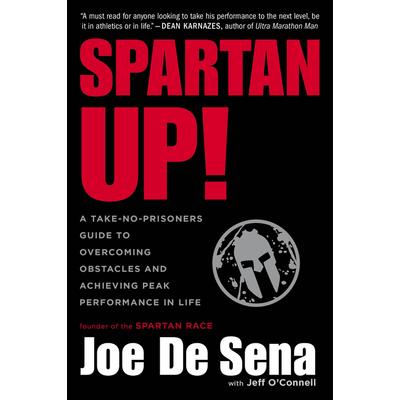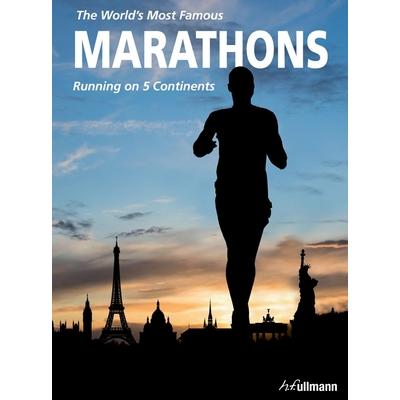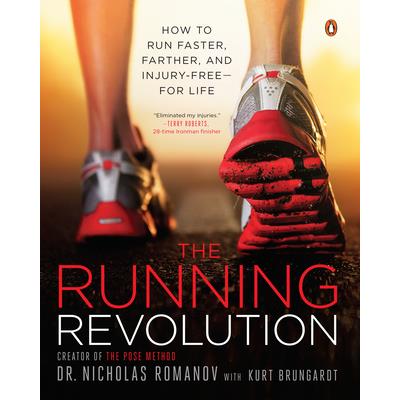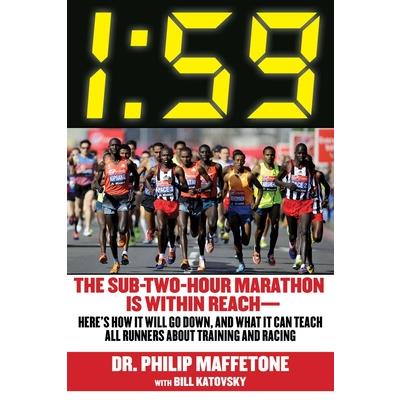Running With Sherman
"A delight, full of heart and hijinks and humor . . . McDougall is a gifted storyteller who gets to the heart of the human-animal connection." --John Grogan, author of Marley & Me: Life and Love with the World's Worst Dog From the best-selling author of Born to Run, a heartwarming story about training a rescue donkey to run one of the most challenging races in America, and, in the process, discovering the life-changing power of the human-animal connection. When Chris McDougall agreed to take in a donkey from an animal hoarder, he thought it would be no harder than the rest of the adjustments he and his family had made after moving from Philadelphia to the heart of Pennsylvania Amish country. But when he arrived, Sherman was in such bad shape he could barely move, and his hair was coming out in clumps. Chris decided to undertake a radical rehabilitation program designed not only to heal Sherman's body but to heal his mind as well. It turns out the best way to soothe a donkey is to give it a job, and so Chris decided to teach Sherman how to run. He'd heard about burro racing--a unique type of race where humans and donkeys run together in a call-back to mining days--and decided he and Sherman would enter the World Championship in Colorado. Easier said than done. In the course of Sherman's training, Chris would have to recruit several other runners, both human and equine, and call upon the wisdom of burro racers, goat farmers, Amish running club members, and a group of irrepressible female long-haul truckers. An entire community comes together to help save Sherman and, along the way, Chris shows us the joy of a life with animals.
Journey to Kona
Have you ever wanted to live the Ironman dream of qualifying for the Hawaii Ironman - and completing it? But what will it take to improve your Ironman training and racing so you achieve the result you want and make this a reality?The biggest challenge Ironman athletes face is not their lack of motivation or determination. They face three key problems: Lack of know-how around Ironman triathlon training and racing principles. Lack of long-term strategy for improvement. Lack of a training plan and accountability. Journey to Kona will teach you how to successfully prepare and train for your next Ironman triathlon, including: How to implement specific Ironman training principles to improve your Ironman triathlon fitness. How the different elements of Ironman triathlon - training, pacing, nutrition, tapering and more - apply to you. How ot invest your time well and get the best training results. How to plan, prepare for and race your best Ironman triathlon. How to have more fun swimming, biking and running! By the end of Journey to Kona, you will have unlocked an unwavering belief in yourself. You will have confidence that your training is going to improve and your racing is going to improve, and you will hit the start line confident that you are going to finish your best Ironman triathlon.
Crossing the Finish Line
Crossing the Finish Line is a message of motivation and personal development. It is a comparison of a marathon with life. Even if you don't run or practice any sport, you can benefit from this message to have a new start. Life is hard, and setbacks can take away the joy of life. The message of this book can help you to find balance in body, mind and spirit. Activities like running can oxygenate your brain, make your heart strong and teach you to be patient and disciplined. Good nutrition can keep your cells healthy and your body strong so you can accomplish your purpose. When you find your purpose in life, you can stablish relations with like-minded people that can bring good energy to your live, you can impact people around you and you can be the best version of your-self. Faith in God can make your spirit flourish and show you the way to complete the race of your life, to cross the finish line.
Crossing the Finish Line
Crossing the Finish Line is a message of motivation and personal development. It is a comparison of a marathon with life. Even if you don't run or practice any sport, you can benefit from this message to have a new start. Life is hard, and setbacks can take away the joy of life. The message of this book can help you to find balance in body, mind and spirit. Activities like running can oxygenate your brain, make your heart strong and teach you to be patient and disciplined. Good nutrition can keep your cells healthy and your body strong so you can accomplish your purpose. When you find your purpose in life, you can stablish relations with like-minded people that can bring good energy to your live, you can impact people around you and you can be the best version of your-self. Faith in God can make your spirit flourish and show you the way to complete the race of your life, to cross the finish line.
The Incomplete Book of Running
Peter Sagal, the host of NPR's Wait Wait...Don't Tell Me! and a popular columnist for Runner's World, shares "commentary and reflection about running with a deeply felt personal story, this book is winning, smart, honest, and affecting. Whether you are a runner or not, it will move you" (Susan Orlean). On the verge of turning forty, Peter Sagal--brainiac Harvard grad, short bald Jew with a disposition towards heft, and a sedentary star of public radio--started running seriously. And much to his own surprise, he kept going, faster and further, running fourteen marathons and logging tens of thousands of miles on roads, sidewalks, paths, and trails all over the United States and the world, including the 2013 Boston Marathon, where he crossed the finish line moments before the bombings. In The Incomplete Book of Running, Sagal reflects on the trails, tracks, and routes he's traveled, from the humorous absurdity of running charity races in his underwear--in St. Louis, in February--or attempting to "quiet his colon" on runs around his neighborhood--to the experience of running as a guide to visually impaired runners, and the triumphant post-bombing running of the Boston Marathon in 2014. With humor and humanity, Sagal also writes about the emotional experience of running, body image, the similarities between endurance sports and sadomasochism, the legacy of running as passed down from parent to child, and the odd but extraordinary bonds created between strangers and friends. The result is "a brilliant book about running...What Peter runs toward is strength, understanding, endurance, acceptance, faith, hope, and charity" (P.J. O'Rourke).
Track and Field
This is an inspirational track and field book, unlike anything that has been written on the topic. It challenges those who believe that genetic makeup is the only significant contributing factor to becoming an elite track and field athlete, and goes beyond technique to explore the critical importance of mindset. It offers evidence-based tools to help build sustainable and performance-enhancing training philosophies, with a capacity to support athletes from all parts of the genetic spectrum on their journey to the top. The book is a unique story of one athlete's journey in the decathlon from humble beginnings in rural Latvia, through the US college experience on the plains of Kansas, and most recently training with Olympians in Prague, in the heart of Europe. The book documents the physical and mental challenges encountered, the struggles to overcome them, and the training and coaching lessons learned along the way. The book contains personal stories, observations, collected training wisdom and scientific evidence in an easy-to-read format. It offers practical lessons that are often overlooked in track and field training, but which are crucial both for athletes' development and elite performances. The author is an international decathlete from Latvia, who has trained under Olympic-level coaches, as well as with numerous Olympic athletes and Olympic medalists. The book is structured into three sections:1) Training Lessons2) Recovery and Performance Lessons3) Mindset LessonsThe first section offers fifteen critical training philosophy and methodology-related lessons. The second section provides nine lessons from recovery and performance angles. And the third section describes seven sports psychology lessons that can be applied effectively in track and field. All three sections of the book work together to provide an answer to the same question: how can track and field athletes challenge their assumed genetic potential? The core theory focuses on the concept of the "cumulative training effect", and the book guides the reader through the different elements of training, recovery and mindset that can offer a significant contribution towards a cumulative training effect. The book is aimed primarily at athletes and coaches involved in the sprint, hurdle and field disciplines of track and field. It is relevant for athletes at all stages of their development, from middle and high school, through college, and onto professional and ultimately high-performance athletes. However, the life experiences and struggles of the author will appeal to anyone involved in track and field, and sport more generally, including sports fans, the families and friends of those in competitive sport, and anyone who enjoys an inspirational tale of triumph over adversity.
Ten Iron Principles
My name is Kelly, and I'm an Ironman.I never was much of an athlete, but God pulled me out of my comfort zone and put me in the world of endurance racing. In this environment, He could be the strength in my weakness. As I trained, I became stronger physically and spiritually. In fact, I came to salvation through an Ironman triathlon. God showed me His goodness through sweat and pain. Ten Iron Principles is a memoir that reveals this journey: from playing football on a boys' junior varsity team to training for an Ironman triathlon in adulthood. From living apart from God to praying through a 2.4 mile swim. It's the story of how God prepared me for my Kingdom purpose. Never quit. Defy limits. CourageUP!
Athletic Training for Men and Boys - A Comprehensive System of Training Tables for All Events
"Athletic Training for Men and Boys" is a vintage illustrated guide to athletics by F. A. M. Webster. It contains a complete system of athletics training to be followed by coaches or students, and will be of considerable utility to athletes new and old. Frederick Annesley Michael Webster (1886 - 1949) was a British athletics coach and author, and soldier active during World War One. He wrote profusely on the subject of athletics, with his best known book being "Athletics in Action" (1931). Contents include: Value of Training and Use of Training", "Tables of Effort Explained", "The Sprints", "440 Yards", "Short Middle Distances and Three-quarter-mile Steeplechase", "Distance Races and Two-mile Steeplechase", "Yards High Hurdles", "Yards Low Hurdles", etc. Many vintage books such as this are becoming increasingly scarce and expensive. It is with this in mind that we are republishing this volume now in a modern, high-quality edition complete with a specially-commissioned new introduction on athletics.
Running to Glory
The runners from Eisenhower High School have every justification to fail. They're from low income families, many of whom are migrant workers. With little time to devote to their passion, they give everything they have to their quest for the Washington State High School Cross Country Championship. Running to Glory is a celebration of grit, perseverance, and the American Dream. It follows the cross country team from Eisenhower High in Yakima, Washington, through a tumultuous and challenging season with excitement, suspense and pathos. Despite enormous economic disadvantages, the Eisenhower runners compete with affluent schools in the Seattle-Tacoma area, where parent involvement is strong and funds are readily available. Their coach Phil English knows how his runners feel. He grew up poor in rural Ireland in the 1960s during The Troubles and emigrated to the U.S. for a college track scholarship. Over 37 years coaching in Yakima, Coach English won 11 state titles, and sent more than 100 kids to college with scholarships for running. Author Sam McManis crafts a compelling narrative, which follows the team from summer workouts in the blistering sun to the state championship meet in the bitter cold. Readers will discover how these young men and women overcome their environment or succumb to it--on the course and in the classroom.
Advanced Marathoning
If you've set your sights on shaving minutes off your time, it's time to ramp up your training with Advanced Marathoning, Third Edition. Find the plan that works best for you from the detailed day-by-day training schedules by choosing between 18- and 12-week preparation and selecting weekly distances of 55, 55 to 70, 70 to 85, or 85-plus miles. If you run marathons close together, you'll find 6- to 12-week training plans to maximize your training time and recovery. For older marathoners, there is a full chapter dedicated to their unique training, nutrition, and recovery needs. Complement your running workouts with strength, core, and flexibility exercises to help keep injury at bay. Learn how current technologies such as GPS and online logs can help you analyze your training and performance and set goals for future races. Draw inspiration and insights from elite marathoners such as Galen Rupp, Eliud Kipchoge, and Molly Huddle. Implement cutting-edge nutrition and hydration strategies and recovery techniques to feel and run your best. Advanced Marathoning gives ambitious marathoners the information needed to train smarter, remain injury-free, and cross the next finish line stronger and faster than ever.
Running and Racing After 35
By the authors of The Self-Coached Runner, this book is also about road racing. It provides training schedules for five and ten kilometre and marathon races, and devotes chapters to nutrition, sports psychology and the effects of the ageing process.
Let Your Mind Run
NEW YORK TIMES BESTSELLER - "Deena Kastor is one of the greatest bodies in distance running, but this book captures what is so groundbreaking about her mind" (Alexi Pappas, Olympian, writer, and filmmaker)--now featuring a workbook to help chart your mind's journey"Inspiring, fascinating, and insightful. Practical for anyone trying to overcome the biggest impediments to climbing that next hill of growth."--Shawn Achor, author of The Happiness Advantage and Big Potential Deena Kastor was a star youth runner with tremendous promise, yet her career almost ended after college, when her competitive method--run as hard as possible, for fear of losing--brought her to the brink of burnout. On the verge of quitting, she took a chance on legendary coach Joe Vigil, who had started the first professional distance-running team in the US. At his Colorado training center, she encountered the notion that shaping her mind to be more encouraging, kind, and resilient could make her faster than she'd ever imagined possible. Building a mind so strong would take years of effort and discipline, but it would propel Kastor to the pinnacle of running--to American records in every distance from the 5K to the marathon--and to the accomplishment of earning America's first Olympic medal in the marathon in twenty years. Let Your Mind Run is a fascinating, intimate look inside the mind of an elite athlete, a remarkable story of achievement, and an insightful primer on how the small steps of cultivating possibility can give anyone a competitive edge.
Life Is a Marathon
An endurance athlete and coach reveals how the marathon transforms the lives of everyone who attempts it--and how it has helped his own family cope with serious adversity Step after step for 26.2 miles, hundreds of thousands of people run marathons. But why--what compels people past pain, lost toenails, 5.30 am start times, The Wall? Sports writer Matt Fitzgerald set out to run eight marathons in eight weeks across the country to answer that question. At each race, he meets an array of runners, from first timers, to dad-daughter teams and spouses, to people who'd been running for decades, and asks them what keeps them running. But there is another deeply personal part to Matt's journey: his own relationship to the sport--and how it helped him overcome his own struggles and cope with his wife Nataki's severe bipolar disorder. A combination of Matt's own How Bad Do You Want It? and What I Talk About When I Talk About Running, Life Is a Marathon captures the magic of those 26.2 miles. At the end of the day--and at the end of the race--the pursuit of a marathon finish line is not unlike the pursuit of happiness. You will pick up the book for a powerful personal story about what running does for the people for whom it does the most. You will put it down with a greater understanding of what it means to be alive in this world.
Triathlon for the Every Woman
You Are a Badass for aspiring triathletes: a practical and inspiring guide to getting off the couch and on the trail to race your first -- or 50th -- triathlon When Meredith Atwood first shared her journey from tired, overworked wife and mom to successful triathlete, her story resonated with women everywhere, online at her SwimBikeMom blog and in the first edition of Triathlon for the Every Woman. Now with her own IRONMAN finishes, experience, and triathlon coaching expertise, Meredith is back with even more wisdom. In this fully revised edition, Atwood not only shares how she went from the couch to an IRONMAN 70.3 triathlon in just over a year, but also shares the latest expertise from coaches, nutritionists, and athletes on each component of the triathlon: swimming, biking, and running. With compact training plans, the most current nutrition advice, updated resources, and the latest information on long-distance racing, this new edition has all you need to make your triathlon goals a reality.
Marathon Training
Marathon Training: The Underground Plan To Run Your Fastest Marathon Ever: A Week by Week Guide With Marathon Diet & Nutrition Plan reveals the methods used to turn runners into race winners. This book introduces method which will gradually build up the moderate-high mileage required for marathon success, spreading those miles more sensibly throughout the week. Running easy days mixed with precisely paced speed, strength, and tempo workouts, runners will steel their bodies and minds to run the hardest miles of the marathon. In addition, detailed nutrition and hydration chapters also help runners pinpoint their personal energy and hydration needs so they know precisely how much to eat and drink during workouts, race week, race day, and for recovery. This approach to pacing and nutrition means marathoners will never hit the wall. Marathon Training: The Underground Plan To Run Your Fastest Marathon Ever: A Week by Week Guide With Marathon Diet & Nutrition Plan lays out the smartest marathon training program week by week to mold real marathon muscles, train their body to never hit the wall, and prepare to run their fastest marathon ever.
The Great Shoots
Now in its Third Edition, The Great Shoots continues to be unique in the history of sporting literature: the first and only book to ever embark on a comprehensive survey of the game-shooting scene, both as it was and as it stands today. In this new and revised edition the fascinating story is brought right up to date. Many of the shoots chosen are owned by the rich and famous, and Brian Martin here provides a rare insight into their social lives; providing fascinating comment on their own estates and on shooting generally. Before detailing the history and present sport of each estate, region by region, the author sets the scene by outlining the history of game shooting in Britain: the changing attitude of society; how economics have played an increasingly important part; how the popular press has perpetuated an often inaccurate image, how technical developments have shaped both gun-making and game rearing; and much more. The inter-relationship between shooting and conservation, and the important contribution to the general welfare of our flora and fauna by the overwhelming majority of shoot proprietors, are given special attention. This superb volume has become the established celebration of the gameshooting world today.
The Happy Runner Project
Is your daily run starting to drag you down? Has running become a chore rather than the delight it once was? Then The Happy Runner is the answer for you.Authors David and Megan Roche believe that you can't reach your running potential without consistency and joyful daily adventures that lead to long-term health and happiness. Guided by their personal experiences and coaching expertise, they point out the mental and emotional factors that will help you learn exactly how to become a happy runner and achieve your personal best.Following the "some work, all play" approach, The Happy Runner introduces the three commandments of happy running and teaches you how to balance the effort of running with the simple joy of the activity: Learn how to run fast, run long, and stay healthy with proven training methods.Read real stories from professional and recreational athletes who have had personal breakthroughs as they learned to love the process of running.Understand how to adapt your running based on your personal lifestyle and goals as well as avoid setbacks from injury.Develop your self-belief and make positivity your default setting so you can reach your goals.Whether you're battling burnout, are returning after an injury, or are new to running and want to enjoy a 5K or an ultramarathon, the science-based training guidance in The Happy Runner will help you get faster, go longer, and live stronger--all with a smile.
Believe Training Journal
Believe in your training; believe in yourself. Get motivated to become the runner you were meant to be with the new Believe Training Journal (Bright Teal Edition) by pro runners Lauren Fleshman and Roisin McGettigan-Dumas. Inspired by their own training and racing methods, Lauren and Ro offer a training journal that has it all: designated grids for recording data and times as well as space to process and dream. The journal offers a full year of undated weeks, an annual calendar, worksheets, quizzes, lists, and plenty of space for notes. Lauren and Ro share their wisdom and experience throughout the journal--with thought-provoking insight on how to define goals, how to respect your body, how to deal with adversity, and how to get mentally tough for competition--all to help you find balance in your running and become a healthier, happier, and better athlete. Top runners know a good training diary is invaluable for the insights they can reveal. The Believe Training Journal (Bright Teal Edition) will help you explore your athletic side and pursue your own running journey.
Hopi Runners
In the summer of 1912 Hopi runner Louis Tewanima won silver in the 10,000-meter race at the Stockholm Olympics. In that same year Tewanima and another champion Hopi runner, Philip Zeyouma, were soundly defeated by two Hopi elders in a race hosted by members of the tribe. Long before Hopis won trophy cups or received acclaim in American newspapers, Hopi clan runners competed against each other on and below their mesas--and when they won footraces, they received rain. Hopi Runners provides a window into this venerable tradition at a time of great consequence for Hopi culture. The book places Hopi long-distance runners within the larger context of American sport and identity from the early 1880s to the 1930s, a time when Hopis competed simultaneously for their tribal communities, Indian schools, city athletic clubs, the nation, and themselves. Author Matthew Sakiestewa Gilbert brings a Hopi perspective to this history. His book calls attention to Hopi philosophies of running that connected the runners to their villages; at the same time it explores the internal and external forces that strengthened and strained these cultural ties when Hopis competed in US marathons. Between 1908 and 1936 Hopi marathon runners such as Tewanima, Zeyouma, Franklin Suhu, and Harry Chaca navigated among tribal dynamics, school loyalties, and a country that closely associated sport with US nationalism. The cultural identity of these runners, Sakiestewa Gilbert contends, challenged white American perceptions of modernity, and did so in a way that had national and international dimensions. This broad perspective linked Hopi runners to athletes from around the world--including runners from Japan, Ireland, and Mexico--and thus, Hopi Runners suggests, caused non-Natives to reevaluate their understandings of sport, nationhood, and the cultures of American Indian people.
You Can Run Pain Free! Revised & Expanded Edition
Have you ever wondered if it is truly possible to run pain and injury free?Do you yearn for the day that you will be able to enjoy the many benefits that running brings by running pain and injury free?Sadly, many runners hold an inherent yet often unspoken belief that running pain and injury free is impossible. Many runners believe that if you run far enough and for long enough, injury will be the inevitable result.In this revised edition of You CAN Run Pain Free! A physio's 5 step guide to enjoying injury-free and faster running readers will discover how to both prevent and overcome running injuries, and go on to enjoy new levels of exercise pain and injury free, and ultimately faster running.Written by a highly successful physiotherapist and an accomplished triathlete and runner, this book offers runners of all levels hope that it is indeed possible to run pain and injury free. This book is written for any runner who: is seeking to proactively prevent injuries is currently injured and looking to return to running has been previously injured and never made a return to running is not concerned about injury prevention or rehabilitation but just wants to get faster.
College and University Track, Cross-country and Indoor Attendance and Scorekeeping Informa
This is a track-and-field workbook that will help coaches and athletes coordinate and keep scores and statistics of dual meets and outdoor track, cross-country, and indoor track and field. There are a number of illustrations and ideas that will help coaches and athletes manage or coordinate their practice and other activities. The research includes track-and-field code of ethics, attendance for all three-seasonal sports (track, cross-country, and indoor), prayers for spiritual insight for coaches and athletes, diet and nutrition guidelines, and the history of track and field. This track-and-field attendance and scorekeeping information log is useful for college and university and for both men and women. This book will give all coaches the structure and understanding to coordinate and manage their day-to-day practice and dual meets and will help them envision their daily track-and-field preparation. There is a coach survey evaluation form that coaches should present to athletes at the end of the season. Coaches can use the evaluation form from the athletes feedback to create a better program for the following year.
Recreational Mechanics
There is no available information at this time. Author will provide once available.
The Four-Minute Mile
The fantastic memoir by Roger Bannister, the middle-distance runner who achieved the epic quest to break the four-minute mile! All sports have pivotal moments, single events that change perceptions forever after. For the sport of running such a moment passed on a blustery May afternoon in 1954, when Roger Bannister broke the four-minute mile. This is the story of that fantastic run. Today, more than sixty years later, lovers of sport - runners and non-runners alike - will be moved by this impassioned story of one of sport's true heroes.
Fifty Places to Run Before You Die
Chris Santella's Fifty Places to Run Before You Die is a beautifully illustrated collection of the most exhilarating running courses in the world. Foreword by Thom Gilligan Featuring a balance of popular races (marathons, 10Ks, and endurance runs) and scenic trails off the beaten path, as well as interviews with accomplished runners and leaders of respected running organizations, this book divulges the details that make each venue unique--and plenty of tips for those who aspire to run there. Readers will discover events and courses both national and international, including the Ultra-Trail du Mont Blanc in France, the New York City Marathon, the Vancouver Sun Run, the Grand Canyon, the Dolomites in Italy, and the Great Ocean Road Marathon in Australia. Fifty Places to Run Before You Die is an essential travel companion for runners of all levels seeking to conquer new terrain while breaking personal records. Fifty Places series: Fifty Places to Fly Fish Before You Die Fifty Places to Play Golf Before You Die Fifty Places to Sail Before You Die Fifty Places to Dive Before You Die Fifty More Places to Golf Before You Die Fifty Places to Hike Before You Die Fifty Places to Bike Before You Die Fifty Places to Ski & Snowboard Before You Die Fifty Places to Paddle Before You Die Fifty Places to Camp Before You Die Fifty Places to Drink Beer Before You Die Fifty Places to Run Before You Die Fifty Places to Surf Before You Die Fifty Places to Rock Climb Before You Die Fifty Places to Practice Yoga Before You Die Fifty Places to Travel with Your Dog Before You Die
Running Your First Marathon
"Andrew Kastor has taken the tried-and-true principles that all us pros follow and made them available and applicable for everyone. Just as Andrew has helped me on my journey, he is sure to help you on yours."-Ryan Hall, US Olympic Marathoner, holder of the US record in the half marathon, and marathon training expertAs a marathon training coach for world-class runners and Olympic medalists, Andrew Kastor knows what it takes to get to the finish line. Whether you are planning to run a full or half marathon, Coach Kastor's marathon training program conditions you to set achievable goals, get in shape, and stay motivated. With an easy-to-follow 20-week marathon training schedule for building strength and endurance, plus expert advice from record-holding runners on what to expect, Running Your First Marathon is the only coaching you'll need to go the distance.Running Your First Marathon lays out a goal-oriented marathon training program with: A 20-Week Marathon Training Program-detailed day-by-day marathon training schedules and space to track your progressMarathon Training 101-advice and tips from world-class marathoners on marathon training, fueling your body, avoiding injury, and race-day preparationMotivational Marathon Training Boosts-from Coach Kastor and other famous runners to help you stay on track during marathon training"Running Your First Marathon will not only inspire you but also help train your mind and body to unlock hidden potential."-Shalane Flanagan, Olympic Silver Medalist, NYC Marathon champion, American record holder, and marathon training pro
Finish Line Vision
Do you have a finish line in your life? A goal that you want to achieve-a dream that you want to live-but you know the road to get there will be long and hard? There are obstacles in your way and you fear that you might fail, and failure intimidates us all, but you still dream of that moment-your finish line moment. How do you get there? FINISH LINE VISION(R) is the motivation that comes from visualizing your success, imagining yourself experiencing that moment. Jay Hewitt will take you on a journey, telling you his remarkable story of overcoming type 1 diabetes to qualify and race on the US national triathlon team, balancing grueling physical training with work as an attorney, diabetes, and life as a husband and father. He provides research on the neuropsychology of achievement with examples of high achievers in history. You will learn lessons on: -setting and reaching goals -overcoming obstacles and doubt -achieving work-life balance -fitness and diet for a healthy lifestyle -handling change and failure Many people have already been inspired by Jay Hewitt's powerful message on stage. If you apply these principles, learn from these successes and failures, work hard, and persevere . . . you will reach your finish line.
The Way of the Runner
It may come as a surprise to many people, but Japan is the most running-obsessed country on earth. A 135-mile relay race, or "ekiden," is the country's biggest annual sporting event. Thousands of professional runners compete for corporate teams in some of the most competitive races in the world. The legendary "marathon monks" run a thousand marathons in a thousand days to reach spiritual enlightenment. Yet so much of Japan's running culture remains a mystery to the outside world, on par with many of the unique aspects of contemporary Japan. Adharanand Finn, the award-winning author of Running with the Kenyans, spent six months immersed in this one-of-a-kind running culture to discover what it might teach us about the sport and about Japan.As an amateur runner about to turn 40, he also hoped to find out whether a Japanese approach to training might help him run faster. What he learns--about competition, team work, form, chasing personal bests, and about himself--will fascinate and surprise anyone keen to explore why we run and how we might do it better.
The Trail Runner’s Companion
The sport of trail running is booming as more runners seek more adventurous routes and a deeper connection with nature. Not only are runners taking to the trail, but a growing number are challenging themselves to go past the conventional 26.2-mile marathon point. The time is right for a book that covers everything a runner needs to safely and successfully run and race trails, from 5Ks to ultra distances. Like a trusted coach, The Trail Runner's Companion offers an inspiring, practical, and goal-oriented approach to trail running and racing. Whether readers are looking to up their distance or tackle new terrain, they'll find sophisticated, yet clear advice that boosts performance and enhances well-being. Along the way, they'll learn: Trail-specific techniques and must-have gearWhat to eat, drink, and think--before, during, and after any trail run How to develop mental tenacity and troubleshoot challenges on longer trail adventures Colorful commentary on the characters and culture that make the sport specialWith an engaging, encouraging voice, including tips and anecdotes from well-known names in the sport, The Trail Runner's Companion is the ultimate guide to achieving peak performance--and happiness-- out on the trails. "Sarah Lavender Smith has long been one of trail running's finest and most insightful writers, and her first book, The Trail Runner's Companion, ties everything together for all trail runners, from newbies to veterans and all abilities in between. She expertly and empathetically describes how one should train, eat, drink, and think while becoming a trail runner. But perhaps most importantly of all, she tells us what it means to be a trail runner--why this journey, in her words, 'all the way up to the summit and back down, ' is worth the effort. If you already are a trail runner, The Trail Runner's Companion will make you want to become a better trail runner. If you aren't yet a trail runner, The Trail Runner's Companion will make you want to become one." - John Trent, longtime ultrarunner, race director, Western States 100-Mile Endurance Run board member, and award-winning sportswriter "The Trail Runner's Companion is a must-have for all trail runners, both new and experienced. It brings a wealth of knowledge and entertaining stories to keep you engaged in the valuable content of the book. If only I had The Trail Runner's Companion to read before my first trail race, I could have avoided so many mistakes! I highly recommend it." - Kaci Lickteig, 2016 UltraRunning Magazine UltraRunner of the Year and Western States 100-Mile Endurance Run champion
For the Glory
"Hamilton is a guarantee of quality." --Financial Times "Duncan Hamilton's compelling biography puts flesh on the legend and paints a vivid picture of not only a great athlete, but also a very special human being." --Daily Mail The untold and inspiring story of Eric Liddell, hero of Chariots of Fire, from his Olympic medal to his missionary work in China to his last, brave years in a Japanese work camp during WWII Many people will remember Eric Liddell as the Olympic gold medalist from the Academy Award winning film Chariots of Fire. Famously, Liddell would not run on Sunday because of his strict observance of the Christian sabbath, and so he did not compete in his signature event, the 100 meters, at the 1924 Paris Olympics. He was the greatest sprinter in the world at the time, and his choice not to run was ridiculed by the British Olympic committee, his fellow athletes, and most of the world press. Yet Liddell triumphed in a new event, winning the 400 meters in Paris. Liddell ran--and lived--for the glory of his God. After winning gold, he dedicated himself to missionary work. He travelled to China to work in a local school and as a missionary. He married and had children there. By the time he could see war on the horizon, Liddell put Florence, his pregnant wife, and children on a boat to Canada, while he stayed behind, his conscience compelling him to stay among the Chinese. He and thousands of other westerners were eventually interned at a Japanese work camp. Once imprisoned, Liddell did what he was born to do, practice his faith and his sport. He became the moral center of an unbearable world. He was the hardest worker in the camp, he counseled many of the other prisoners, he gave up his own meager portion of meals many days, and he organized games for the children there. He even raced again. For his ailing, malnourished body, it was all too much. Liddell died of a brain tumor just before the end of the war. His passing was mourned around the world, and his story still inspires. In the spirit of The Boys in the Boat and Unbroken, For the Glory is both a compelling narrative of athletic heroism and a gripping story of faith in the darkest circumstances.
The 1928 Bunion Derby
The historic 1928 "Bunion Derby" was a cross-country footrace from Los Angeles to New York City. In a supreme test of human endurance and fortitude, runners pounded the pavement for 84 straight days, covering more than 3,400 miles. Starting in Los Angeles, the competitors tracked the path of old Route 66 to Chicago. From there they followed a twisting 1,000-mile trail to New York City. That journey is the subject of this book. While previous books and articles have been written about the race, most have concentrated on the promoter, C. C. "Cash and Carry" Pyle, his runners, or the Route 66 portion of the race. In The 1928 Bunion Derby: A Historical Tour and Driving Guide, Chicago to New York City, author James R. Powell takes a more robust approach--including a turn-by-turn driving guide from Chicago to New York with historical background on the route and the racers. Powell not only portrays the runners and the intensity of such a race, but also explains important events that transpired in the years leading up to the Bunion Derby. His historical tour describes surviving sites along the route and offers stories reminiscent of American life in the late 1920s. More than 200 illustrations--including period photographs, postcard images, and maps--enliven the story of this landmark race. The 1928 Bunion Derby is highlighted by tales of the torturous path runners followed to reach each overnight stop. And reports from period newspapers add color and a sense of the moment to the historic images and stories, both harrowing and heartwarming. A glimpse back in time, with a look at the places along that historic route today and a description of how to get there, The 1928 Bunion Derby has something for everyone--from historians to runners and from road warriors to armchair travelers.
Running Flow
Ask any serious runner and they'll tell you that being mentally sound is vital to success in the sport. The ability to enter a flow state of mind is something that Dr. Mihaly Csikszentmihalyi has devoted his entire career to understanding.In Running Flow, Dr. Csikszentmihalyi is joined by fellow psychologist Christine Weinkauff and running journalist and coach Philip Latter. This landmark work is the first book dedicated to helping runners achieve the state of flow in competitive and training environments. You'll find comprehensive coverage of the phenomenon, unique practice exercises that stimulate its occurrence, and firsthand accounts from elite runners about their flow experiences.The psychological barriers associated with training and competition can be as demanding as the physical ones. Destined to become a running classic, Running Flow will open your mind not only to better performance but also to a better, healthier, and more enjoyable experience.
Run the World
From elite marathoner and Olympic hopeful Becky Wade comes the story of her year-long exploration of diverse global running communities from England to Ethiopia--9 countries, 72 host families, and over 3,500 miles of running--investigating unique cultural approaches to the sport and revealing the secrets to the success of runners all over the world.Fresh off a successful collegiate running career--with multiple NCAA All-American honors and two Olympic Trials qualifying marks to her name--Becky Wade was no stranger to international competition. But after years spent safely sticking to the training methods she knew, Becky was curious about how her counterparts in other countries approached the sport to which she'd dedicated over half of her life. So in 2012, as a recipient of the Watson Fellowship, she packed four pairs of running shoes, cleared her schedule for the year, and took off on a journey to infiltrate diverse running communities around the world. What she encountered far exceeded her expectations and changed her outlook into the sport she loved.Over the next twelve months--visiting 9 countries with unique and storied running histories, logging over 3,500 miles running over trails, tracks, sidewalks, and dirt roads--Becky explored the varied approaches of runners across the globe. Whether riding shotgun around the streets of London with Olympic champion sprinter Usain Bolt, climbing for an hour at daybreak to the top of Ethiopia's Mount Entoto just to start her daily run, or getting lost jogging through the bustling streets of Tokyo, Becky's unexpected adventures, keen insights, and landscape descriptions take the reader into the heartbeat of distance running around the world.Upon her return to the United States, she incorporated elements of the training styles she'd sampled into her own program, and her competitive career skyrocketed. When she made her marathon debut in 2013, winning the race in a blazing 2:30, she became the third-fastest woman marathoner under the age of 25 in U.S. history, qualifying for the 2016 Olympic Trials and landing a professional sponsorship from Asics.From the feel-based approach to running that she learned from the Kenyans, to the grueling uphill workouts she adopted from the Swiss, to the injury-recovery methods she learned from the Japanese, Becky shares the secrets to success from runners and coaches around the world. The story of one athlete's fascinating journey, Run the World is also a call to change the way we approach the world's most natural and inclusive sport.
Night Running
This daring volume combines the best of writing on running with the appeal of the best literary writing, essays that take in the sights and sounds and smells of real life, of real risk, of real pain and of real elation. Emphasizing female voices, this collection of eleven personal essays set in different countries around the world offers a deep but accessible look at the power of running in our lives to make us feel more and to see ourselves in a new light. From acclaimed novelist Emily Mitchell and Portland attorney Anne Milligan to author Vanessa Runs and ESPN reporter Bonnie Ford, a diverse lineup of writers captures a variety of perspectives on running at night. These are stories that can inspire people of all ages and backgrounds to take on a thrilling new challenge. The contributors all have distinct tales to tell, but each brings a freshness and depth to their experiences that make Night Running a necessary part of every runner's library - and a valuable addition to the reading lists of all thoughtful readers.
Spartan Up!
Joe De Sena, one of the founding creators of Spartan Races, sounds the alarm of how soft and weak we've become through modern living. Spartan Up! is a call to arms, motivating readers to take action in their lives through inspiring stories and practical advice.What do marathoners do when 26.2 miles just isn't enough anymore? They try obstacle racing, combining the endurance challenges of a marathon with the mind- and body-bending rigors of overcoming obstacles along the way. At the heart of this phenomenon is Joe De Sena, the driving force behind the Spartan Race. De Sena overcame his own obstacles--working his way from Queens to Wall Street to legendary extreme athlete--by adhering to a simple philosophy: commit to a goal, put in the work, and get it done. From that philosophy, as played out now for millions across trails, through mud, and up mountainsides, the Spartan Race was born. Filled with unforgettable stories of Spartan racers as well as hard-won truths learned along the course, Spartan Up! will help you reach your full potential in whatever you set out to do."A must-read for anyone looking to take his performance to the next level, be it in athletics or in life."--Dean Karnazes, author of Ultra Marathon Man "If there's anyone out there who has taken extreme to a new level, its Joe De Sena--in adventure racing, in business, and ultimately in the business of adventure! Spartan Up! is a must-read."--Robyn Benincasa, world champion adventure racer and New York Times best-selling author of How Winning Works
Running for Women
Down-to-Earth Tips to Embrace Running--at Your Own Pace After losing her mother to cancer, Danica Newon reignited her relationship with running and rediscovered how running provided balance in all areas of her life. Now a high school track coach, Newon shows why running is worth every mile in Running For Women. Runners lose weight, boost energy, get leaner, develop discipline, and cultivate healthy relationships. Newon knows that running for beginners can be intimidating. Running For Women will help you ditch the excuses and commit to a healthy running practice, at any age, any level. This info-packed runner's resource features useful lifestyle tips, targeted running schedules, and valuable injury prevention strategies to get you started. Stay prepped at every step, with: Expert stories and valuable tips from master marathoners Running gear and gadget must-haves for a smooth run Fuel-friendly recipes that cover pre-run to post-run Tips for running while pregnant and running with baby Running For Women is the book you need to read before you hit the trails or the treadmill.
Ironfit Triathlon Training for Women
Providing exactly what the fastest growing segment of the triathlon world yearns for, Melanie and Don Fink have created a complete training guide for women triathletes with highly efficient, easy-to-follow, multi-distance training programs. Women encounter all the same challenges as men in their triathlon training and racing, but there are a host of issues unique to them, issues about which most men don't have a clue. From the stay-at-home mom to the professional woman, female triathletes face societal expectations, and unique physical and emotional concerns. Until now, there has been never been a go-to source of information and guidance. IronFit Triathlon Training for Women arms the woman triathlete with everything she needs to know to persevere and lays out exact step-by-step training programs to help her to achieve her goals. This book includes three training programs designed for women at the Sprint/Standard (a/k/a "Olympic") Distance, Half Iron-Distance, and Full Iron-Distance. Each program is presented at three levels: Competitive, Intermediate, and "Just-Finish." The reader can select the program for the race distance she wants to train for and the exact level, based on her individual competitiveness, experience, and available training time.
The Running Revolution
From a two-time Olympic coach and creator of the Pose Method who has trained the running elite and the US Army, an essential guide for all runners seeking to go faster and farther without injury Christopher McDougall's Born to Run--and the wildly popular natural running trend it sparked--changed the way we think about running, but it has also prompted many questions: Have we been running the wrong way? And, have we been running in the wrong kind of shoe? What is the safest type of foot strike? How many types are there? And what is a foot strike anyway? No existing guide has clearly addressed these concerns--until now. The Running Revolution provides both beginning and experienced runners with everything they need to know in order to safely and efficiently transition to and master a safer and more biomechanically efficient way of running that is guaranteed to improve performance and minimize wear and tear on the body. More than a one-size-fits-all guide, The Running Revolution provides readers with clear instructions, complete with helpful illustrations, that they can easily integrate into their unique running histories in order to run safely, intelligently, and efficiently for many years to come.
1:59
What will it take to run a marathon in less than two hours? The world's fastest times for the marathon have been dropping since the distance of 26.2 miles was made official nearly one hundred years ago. But after a noticeable decline that occurred for a half century, the times, while still edging lower, have stalled several minutes north of two hours for the past decade. For the first time, 1:59 examines what it will take for an elite distance runner to go sub-two hours. It will require more than raw talent, optimal body size, and great athletic genes. In order to become marathon's Roger Bannister and smash this elusive record, this runner must follow a healthy diet and an individualized training regimen that takes advantage of specific environmental factors ("live high, train low"). Because precious seconds count over each mile run, other critical considerations include improved running form and economy, sharpened mental focus, and wearing the right type of racing flats (or even going barefoot). The athlete who finally breaks distance running's most tantalizing barrier will become a worldwide celebrity overnight. Will the runner be a Kenyan, an Ethiopian, an American, or a marathoner from another country? And how soon will it happen? By providing a unique window into the highly competitive world of elite marathon running, this book also allows running enthusiasts to have a thorough understanding of the true potential of endurance athletes. And in turn, they can apply the same training and racing principles discussed in 1:59 to their own running, whether it's a 10K, half marathon, marathon, or ultramarathon.
Hal Koerner’s Field Guide to Ultrarunning
Ultramarathons don't leave much room for mistakes. Don't learn the hard way: get a jump on training for an ultramarathon with Hal Koerner's Field Guide to Ultrarunning, a comprehensive handbook to running 30 to 100 miles and beyond, written by one of the most experienced and recognized athletes in the sport. Hal Koerner is among America's best ultrarunners with podium results in more than 90 ultramarathons. In his smart, down-to-earth handbook, Koerner shares hard-earned wisdom, field-tested habits, and insider tips to help you prepare for your ultra. You'll find guidance on exactly what you need to know to prepare for ultramarathon, including: best gear for ultrarunning fueling and hydration guidelines choosing an ultra trail-running technique first-aid advice beating altitude, storms, and heat race-day game plans crew and pacer tips mental strategies to get you to the finish line The guide offers three detailed training plans to prepare for 50K, 50-mile to 100K, and 100-mile ultramarathons. Start your ultra with confidence and finish it strong with Hal Koerner's Field Guide to Ultrarunning!
The Resilient Runner
Mental toughness is a must for success in endurance running. But who can afford to hire a sports psychologist to learn the fundamentals necessary to succeed? This book will help you uncover your mental skills and teach you techniques to strengthen your mental toughness. It contains detailed sections on motivation, performance anxiety, athletic pain, and race strategy. You will learn the mental skills necessary to better motivate yourself, overcome pain, perform better in races, and gain more enjoyment from running. In short, it will help you become the best runner you can be.




